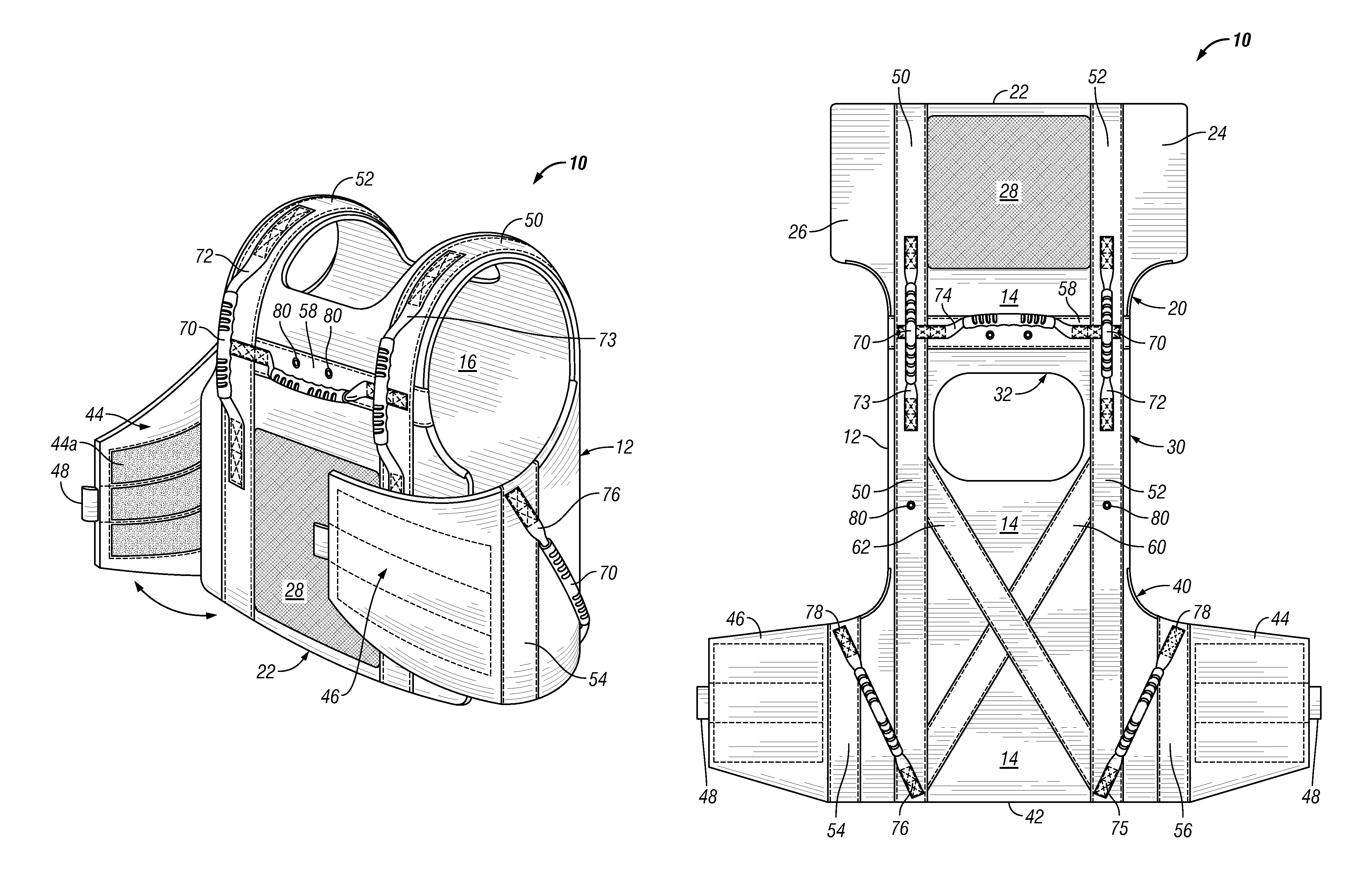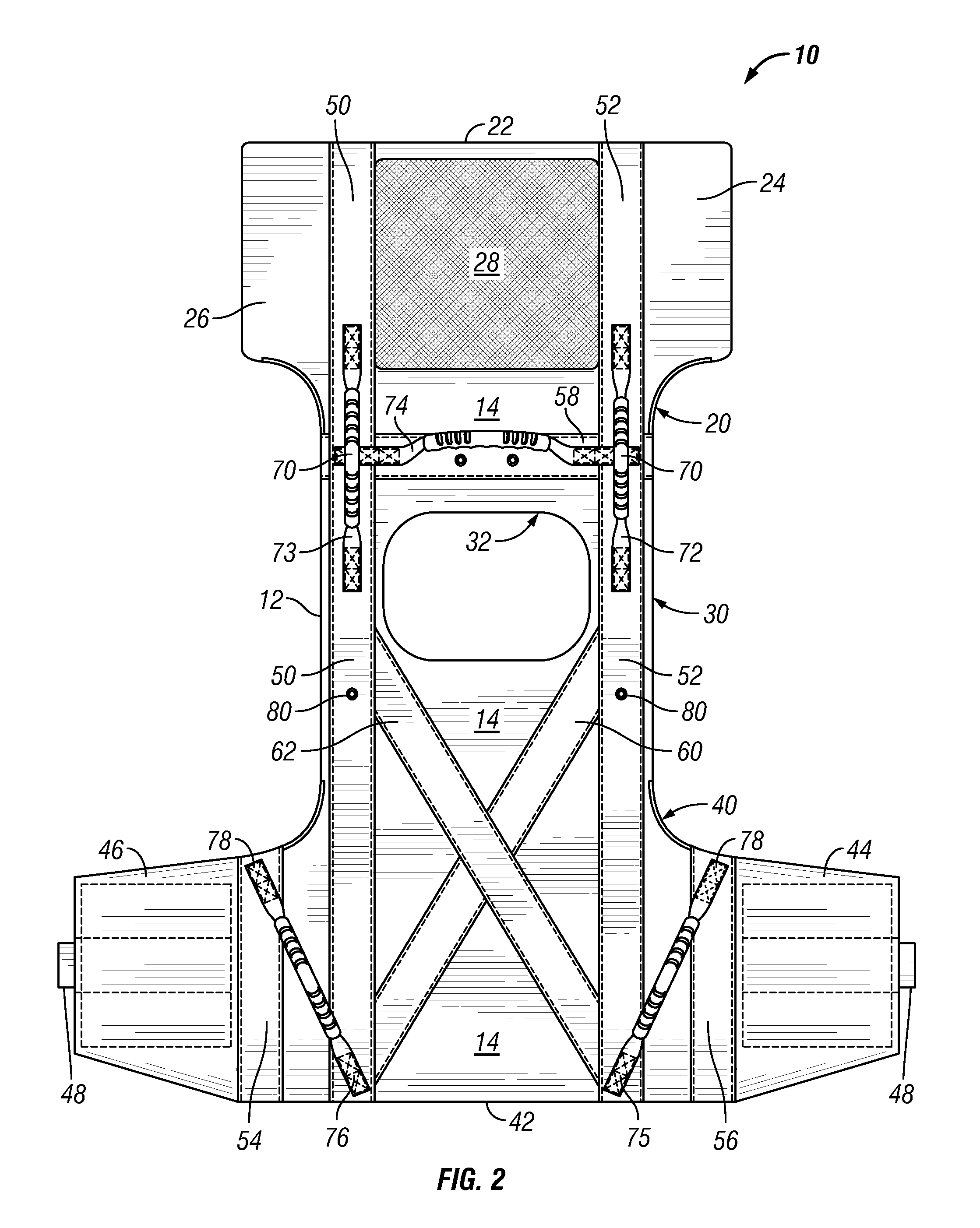Patient assistance device
a technology for caregivers and wheelchairs, applied in the direction of pedestrian/occupant safety arrangements, vehicular safety arrangements, safety belts, etc., can solve the problems of lack of caregiver training, difficulty in assisting caregivers, and large volume of mechanical lifts, etc., to enhance the structural rigidity of the rear panel section, enhance the structural integrity of the unitary garment member, and enhance the structural rigidity
- Summary
- Abstract
- Description
- Claims
- Application Information
AI Technical Summary
Benefits of technology
Problems solved by technology
Method used
Image
Examples
Embodiment Construction
[0028]With reference to the Figures, and in particular FIGS. 1 and 2, an embodiment of the patient assistance device 10 of the present invention is shown. The patient assistance device 10 comprises a reinforced poncho-vest garment worn by a patient. The device 10 assists caregivers in lifting and moving the patient in a wide variety of scenarios. The device 10 is designed to be easily donned and removed from a patient.
[0029]The patient assistance device 10 of the present invention comprises a poncho-style garment in the form of a unitary member 12 having a front panel section 20, a rear panel section 40 and a central or middle panel section 30 interconnecting the front and rear panel sections. The front panel section 20 is sized and shaped to fit across the patient's chest area while the rear panel section 40 is sized and shaped to fit across the patient's back. The central panel section 30 includes an opening 32 sized and shaped for receiving a patient's head therethrough. The fron...
PUM
 Login to View More
Login to View More Abstract
Description
Claims
Application Information
 Login to View More
Login to View More - R&D
- Intellectual Property
- Life Sciences
- Materials
- Tech Scout
- Unparalleled Data Quality
- Higher Quality Content
- 60% Fewer Hallucinations
Browse by: Latest US Patents, China's latest patents, Technical Efficacy Thesaurus, Application Domain, Technology Topic, Popular Technical Reports.
© 2025 PatSnap. All rights reserved.Legal|Privacy policy|Modern Slavery Act Transparency Statement|Sitemap|About US| Contact US: help@patsnap.com



